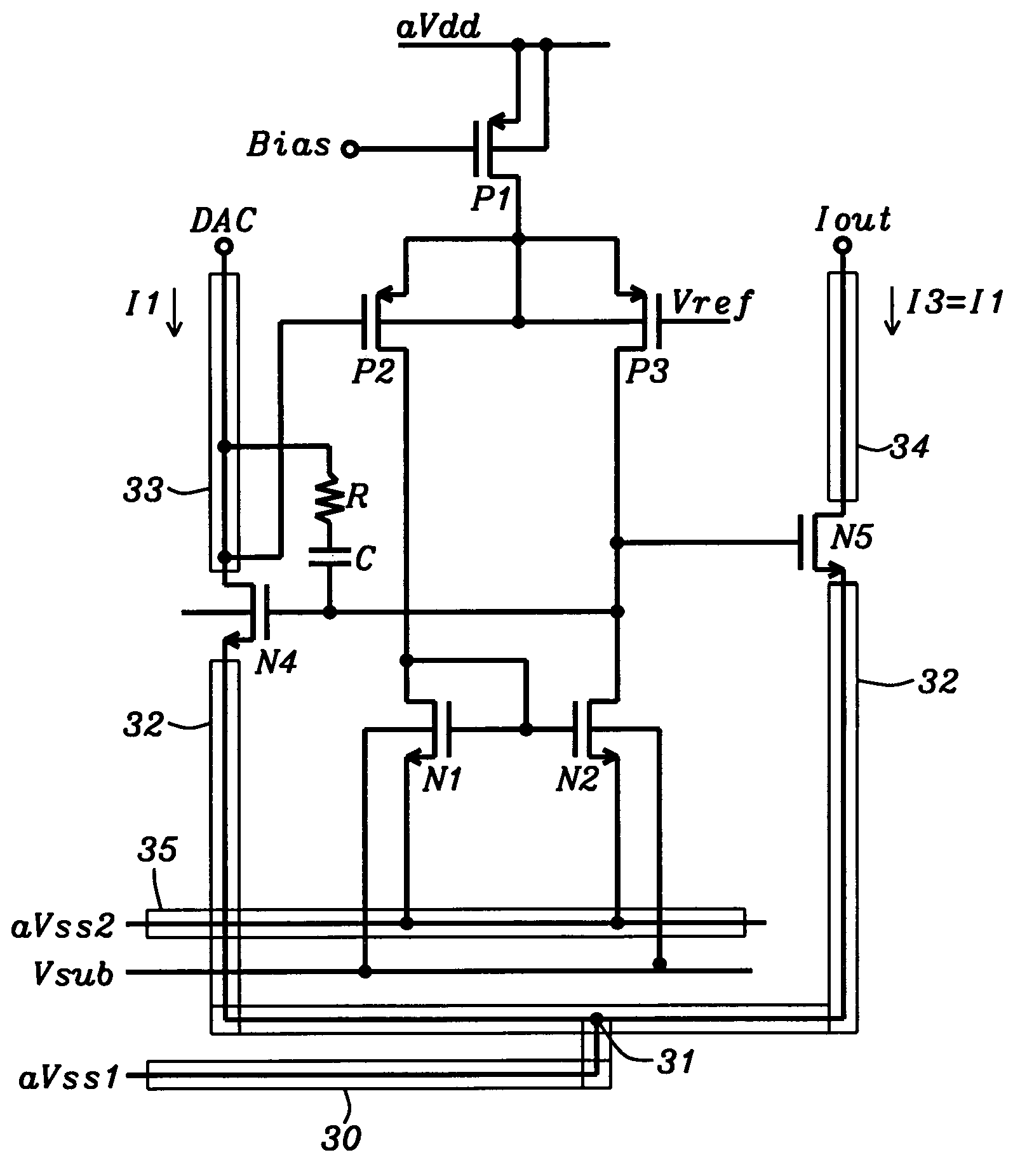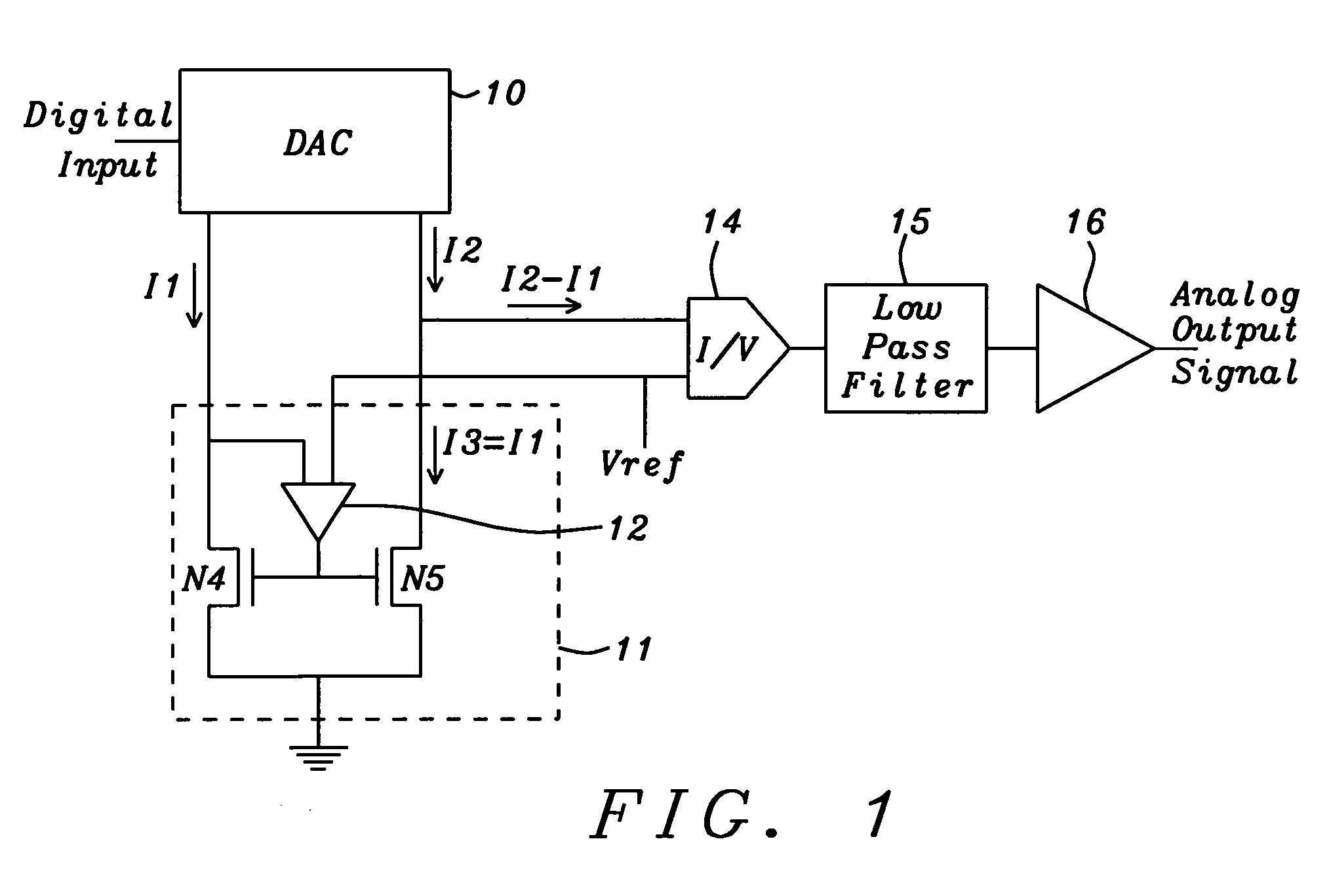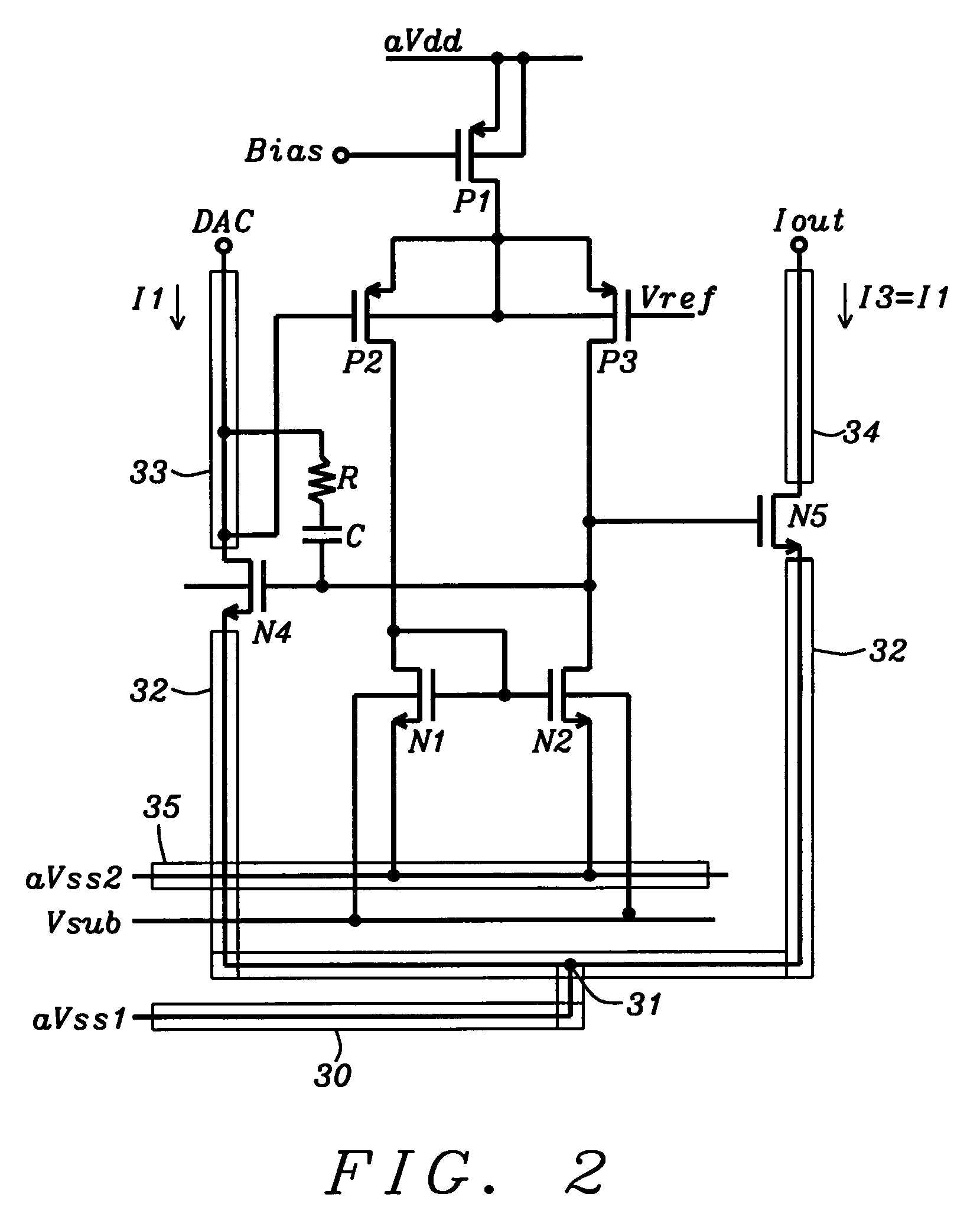Method for implementation of a low noise, high accuracy current mirror for audio applications
a high-accuracy, mirror circuit technology, applied in the direction of digital-analog converters, instruments, transmission systems, etc., can solve the problems of residual error current and added stress, and achieve the effect of accurate matching
- Summary
- Abstract
- Description
- Claims
- Application Information
AI Technical Summary
Benefits of technology
Problems solved by technology
Method used
Image
Examples
Embodiment Construction
[0027]In FIG. 1 is shown the circuitry of the present invention to convert a digital signal to audio analog signal. A digital input signal is connected to a DAC 10, which is a current steering sigma delta DAC that produces two currents, I1 and I2 that are a function of the digital input, where I2 is approximately twice the magnitude of I1. Other DAC designs that produce similar currents are within the scope of this invention. The current I1 forms an input to the current mirror circuit 11. The current mirror circuit is symbolized by an amplifier 12, which drives the gates of two N-channel transistors, N4 and N5. The output current of the current mirror circuit is I3 where I3=I1. The amplifier 12 and a current to voltage converter 14 are connected to a reference voltage Vref around which the current, I2−I3=I2−I1, flows into the current to voltage converter. The currents I1, I2 and I3 are high currents, for example in the milliampere range but are not limited to this range. The referen...
PUM
 Login to view more
Login to view more Abstract
Description
Claims
Application Information
 Login to view more
Login to view more - R&D Engineer
- R&D Manager
- IP Professional
- Industry Leading Data Capabilities
- Powerful AI technology
- Patent DNA Extraction
Browse by: Latest US Patents, China's latest patents, Technical Efficacy Thesaurus, Application Domain, Technology Topic.
© 2024 PatSnap. All rights reserved.Legal|Privacy policy|Modern Slavery Act Transparency Statement|Sitemap



